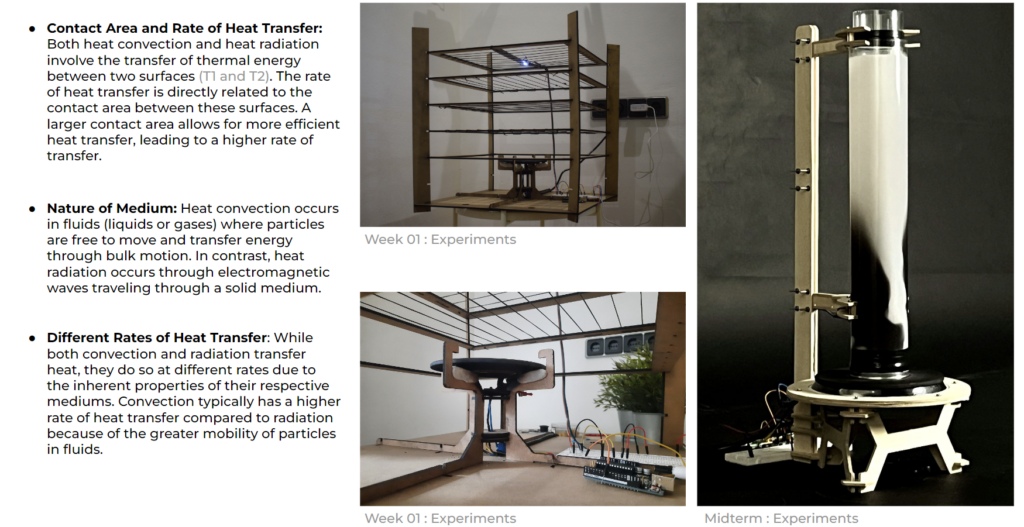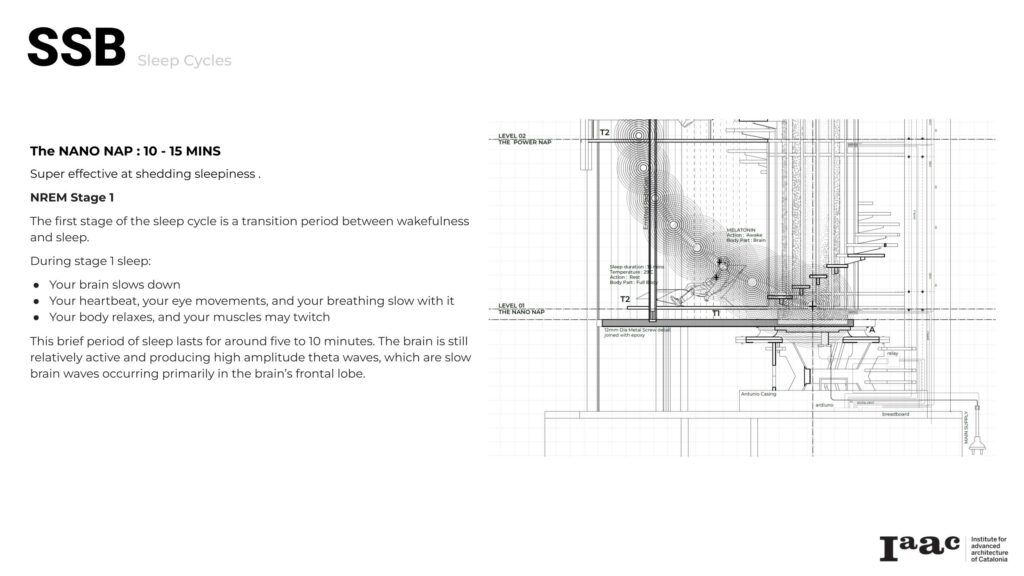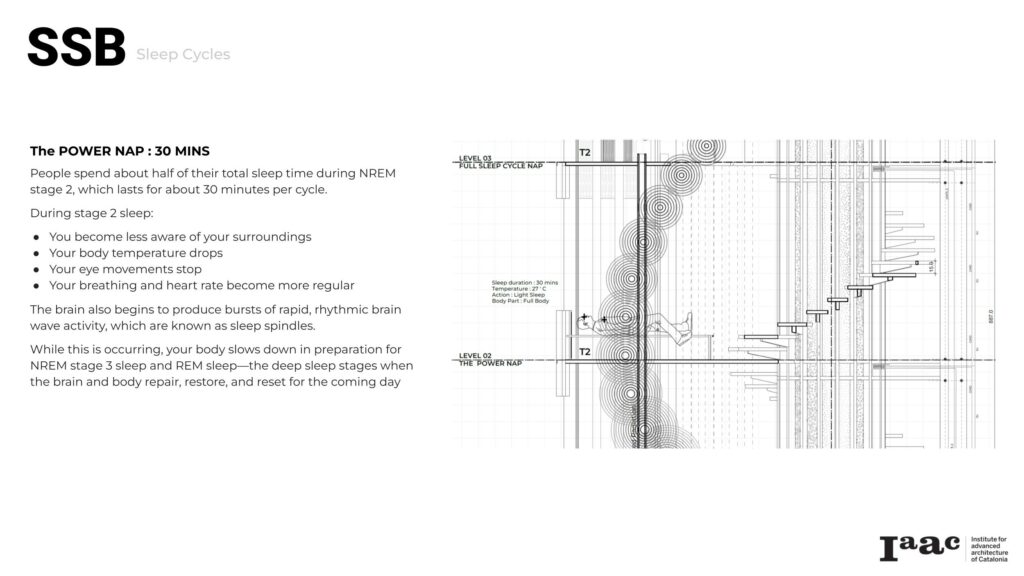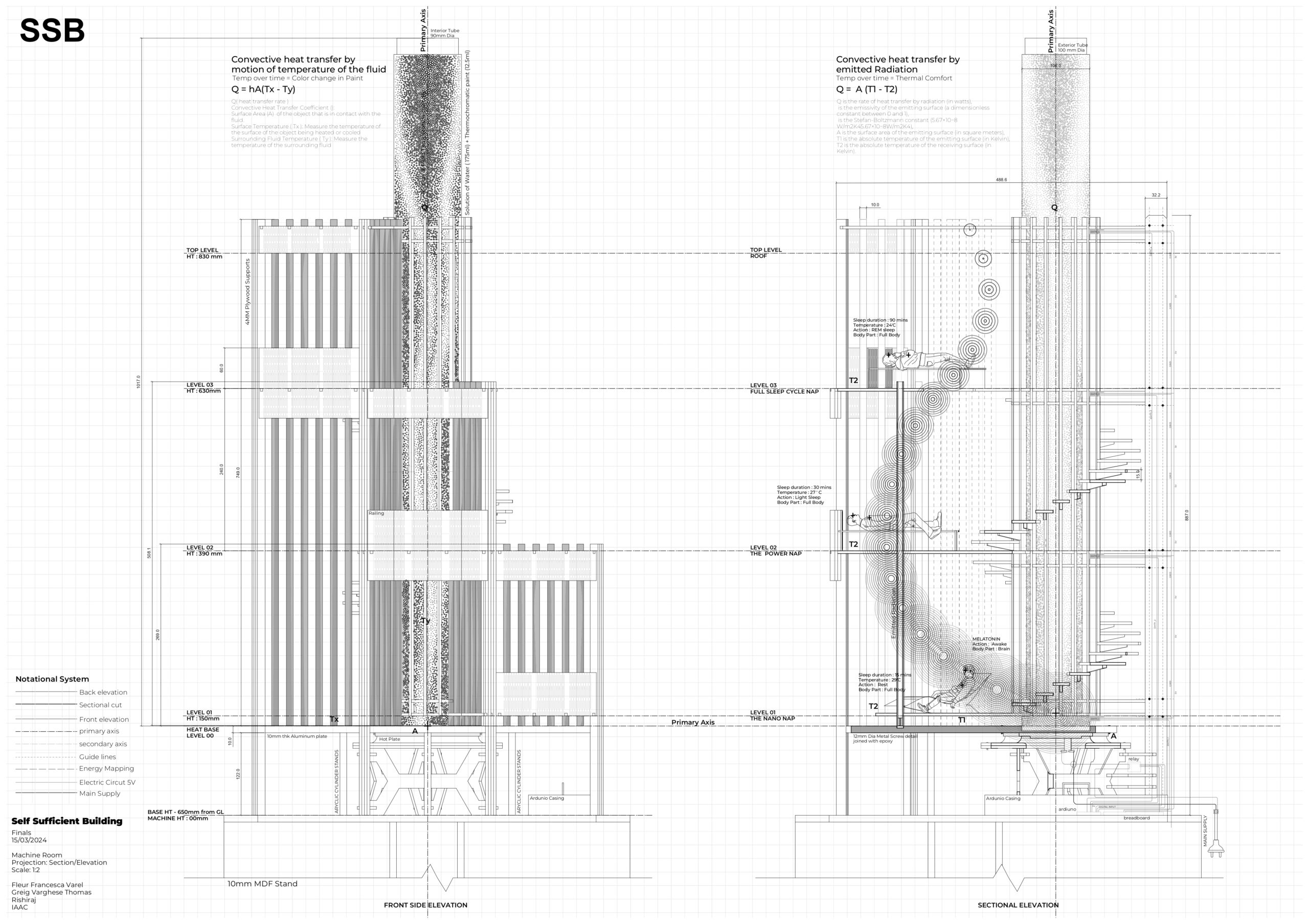


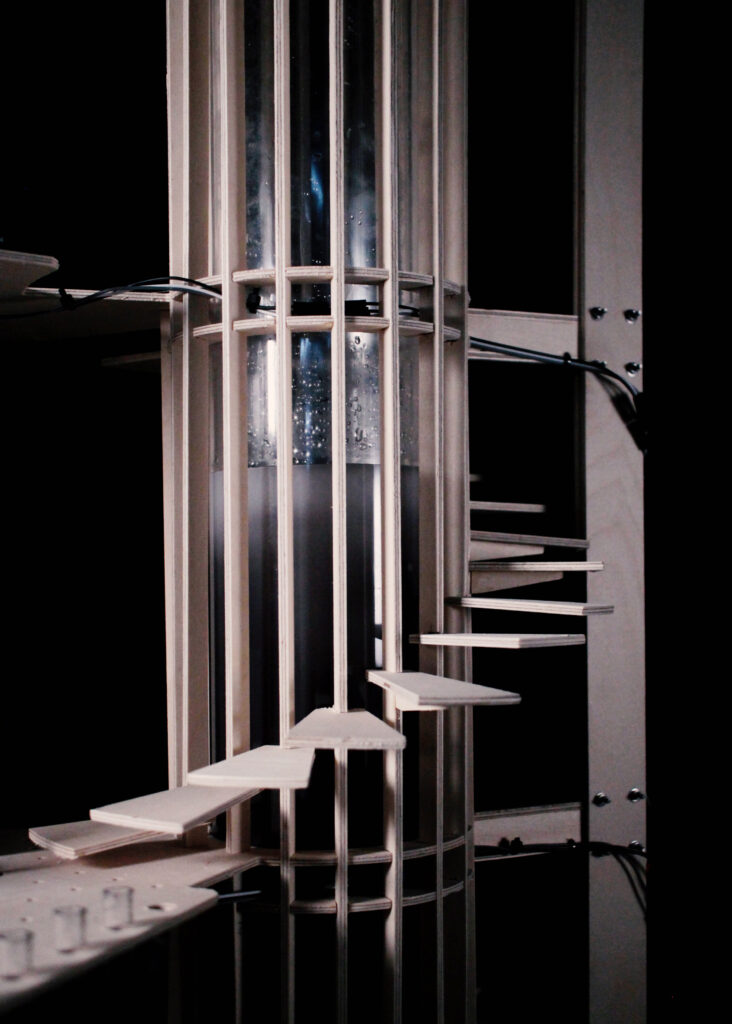
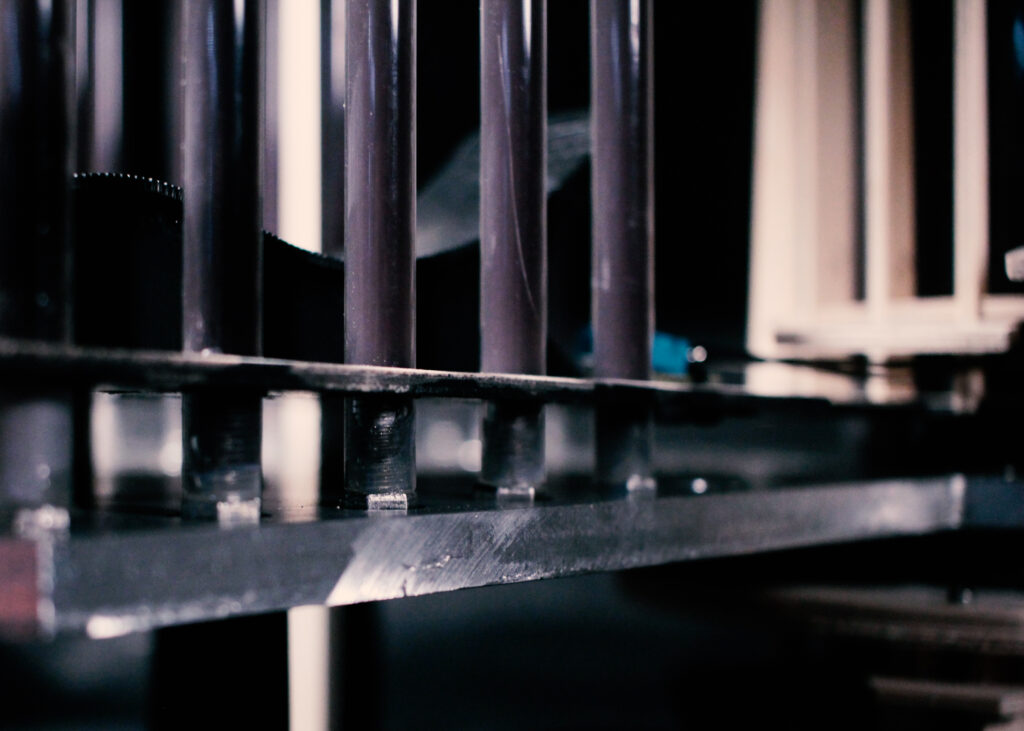
Energy Phenomena
In the machine room model, Convection serves as the primary mechanism for transferring heat from the hot plate to the tubes containing thermochromic fluids. This convective process affects the temperature of the thermochromic liquid within the tubes, which in turn changes the chroma i.e, color intensity of the room, thereby influencing the circadian rhythm of body functioning through visual cues.
Moreover, Thermal Radiation from the hot plate heats the environment inside the room and contributes to optimum body core functioning. This radiation interacts with the body’s thermoregulatory systems, aiding in maintaining metabolic processes at optimal levels, thereby ensuring overall physiological balance within the machine room environment.
Mathematical Formula
PHENOMENON : HEAT CONVECTION
Heat convection is the process whereby heat energy is transferred between a fluid and a solid surface, facilitated by the movement of fluid particles. This movement transports thermal energy from regions of higher temperature to regions of lower temperature within the substance. Unlike conduction, which relies on direct contact between particles for heat transfer, convection involves the bulk movement of the fluid medium, enhancing the exchange of thermal energy.
Q = h×A×(Tx – Ty)
where
Q : heat transfer rate in Joules/hr
A : Effective heat transfer area of the solid surface in m2
Tx & Ty : Steady state temperatures of solid and fluid bodies respectively in 0C
h : Heat transfer coefficient in Joule/(0C×m2)
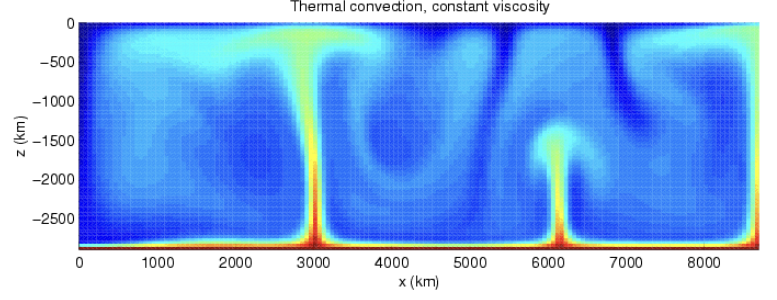
PHENOMENON : HEAT RADIATION
Thermal radiation is electromagnetic radiation generated by the thermal motion of particles in matter. Thermal radiation is generated when heat from the movement of charges in the material (electrons and protons in common forms of matter) is converted to electromagnetic radiation.
Q = ??×A×(T1 – T2)
where:
Q is the rate of heat transfer by radiation (in watts),
? is the emissivity of the emitting surface (a dimensionless constant between 0 and 1),
? is the Stefan-Boltzmann constant (5.67×10?8?W/m2?K45.67×10?8W/m2?K4),
A is the surface area of the emitting surface (in square meters),
T1? is the absolute temperature of the emitting surface (in Kelvin),
This formula describes the rate at which thermal energy is emitted by a surface due to its temperature and properties, and it quantifies the heat transfer between two surfaces separated by a vacuum or a medium that does not conduct heat.
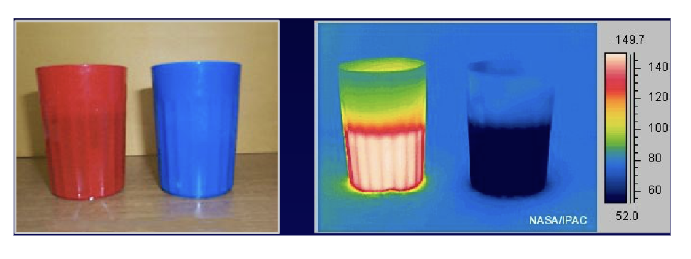
Correlation of the Phenomenon
